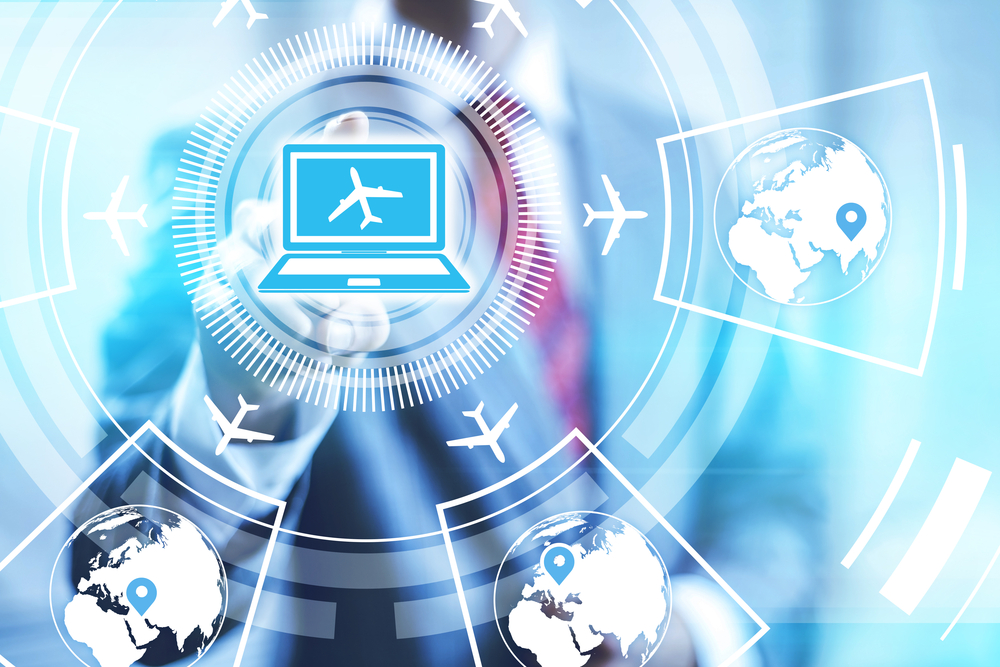It wasn’t long ago that flights and hotel bookings were made in person, itineraries were planned using paper maps, and leaving for a trip meant visiting a currency exchange. Innovative technology is continuously developing and enhancing the travel experience. Here are the latest technology trends that are changing the way people travel:
Mobile payment methods
Advances in mobile payments have presented new opportunities for travelers and travel merchants. As these payment methods support multiple currencies, they are ideal for someone traveling abroad. They also provide a secure and efficient alternative, when compared to cash payments. Here are some of the most interesting trends in this area:
1. mPOS
Using an mPOS (mobile point-of-sale) on a mobile device, such as a phone or tablet, allows merchants to accept payments anywhere, at any time. Travelers on a tour can book an additional tour on the spot, and hotel guests can pay for their drinks by the pool. This added convenience is one of the many advantages of mPOS for the travel industry.
2. QR codes
These black-and-white 2-dimensional barcodes can be scanned using a mobile phone camera. Merchants can create QR codes that link travelers to a mobile payment platform, where they can complete a payment in a few clicks. QR codes can also be used to improve the customer experience by guiding customers to useful information or special offers. This solution is fast, requires no special equipment, and is inexpensive to implement. Taxi companies in particular are beginning to use QR codes, so that customers can make quick, secure payments at the end of a journey.
3. eWallets
eWallet services are being used in various travel applications, including most recently in international airports. In China, for example, travelers can now credit their mobile wallets with unused foreign currency before flying back home.
ePassports
As of 2017, over 120 states have issued ePassports. These passports have a microprocessor that stores the owner’s passport ID data and ID photo in a digital format. The microprocessors can also store digital fingerprints and other biometric data. Many airports now have self-service airport facilities for check-in, border control, and boarding. A typical eGate (automatic border control system) reads the passport data through a contactless chip and performs facial recognition or other biometric verification. It then checks that the passport is valid and the passenger is allowed to travel. Not only does this technology get passengers through the airport faster, but it ensures superior security, too.
Translation technology
Groundbreaking translation technologies are revolutionizing the travel experience. Whereas in the past, traveling to a new country would often involve trying to communicate in an unfamiliar language, now there are tools that can assist in real time. The Pilot translating earpieces are only one example of modern translation technologies. The earpieces pick up dialogue through a microphone, and the dialogue is then translated into the individual’s’ preferred language using a smartphone app.
Smartphone app SayHi Translate works in a similar way. Travelers can simply have the individual they want to speak with talk into their phone, and it will translate their words into the preferred language. These technologies break language barriers and make it infinitely easier for tourists to communicate with locals.
Chatbots
Chatbots are the newest trend in the world of travel. They are used in the travel industry to provide a personalized service to customers, without the need for a human representative. In simple terms, chatbots use AI (artificial intelligence) to chat online in a natural way. There are chatbots for all major messaging platforms, including favorites like WhatsApp and Facebook Messenger. Chatbots can also help travelers plan trips by providing personalized information. Assist is one such chatbot that helps people perform a variety of tasks, including finding out about local attractions and booking hotels.
Wearables
Smartphones are effective for making booking and are useful travel gadgets when navigating around unfamiliar places. However, recent advances in technology have moved wearables into the limelight. Apple and Android have both developed smartwatches that can be used to display maps, make travel bookings and plan trips.
Some hotels even have their own wearable technology for guests, such as the TUI smart band. This smart wristband acts as a room key, room controller, and a mobile wallet. Guests can use the wristband to open their hotel room doors, adjust the air-conditioning, and pay for drinks or spa treatments. The band usually has an associated app through which users can track their spending.
Google Trips
Google Trips helps plan trips from start to finish. It gathers travel information from reservations received through Gmail to create itineraries for individual trips. All travel information is stored so travelers can access it offline. So, if a traveler arrives in his destination, and there’s no mobile phone reception, he can still find his way around. The app shows a map, and offers personalized activity suggestions for each day, taking the weather, time, and location into account. Travelers can plan out daily itineraries, complete with travel times, making the most of every minute of their trip.
Technology has changed the way people travel – from the early stages of planning and booking to multicurrency conversion methods and convenient payment transaction.. Innovation continues to revolutionize the way we travel and new technologies are providing a future filled with smart, convenient, and personalized travel options.





